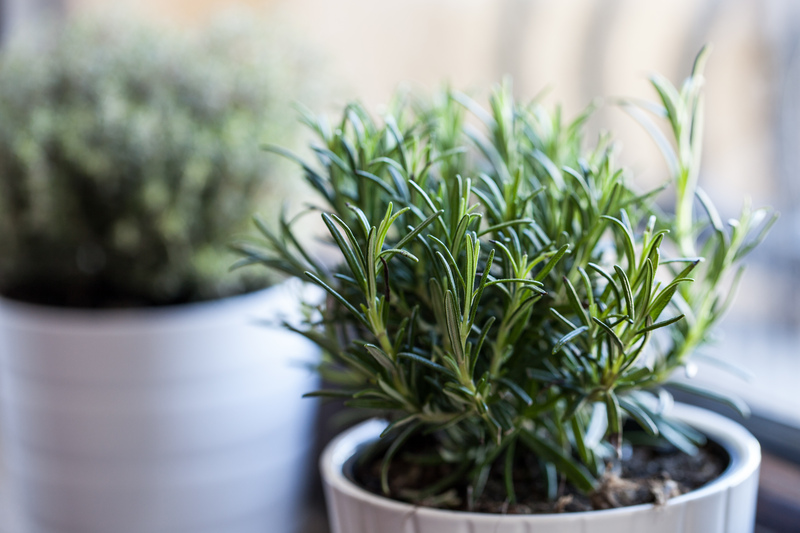Cultivating Calm: Reducing Wind Effects in Your Garden
Posted on 31/05/2025
Cultivating Calm: Reducing Wind Effects in Your Garden
If you've ever lost your favorite flowers to a blustery day or watched newly-planted vegetables bow to strong winds, you know how challenging a windy garden can be. Fortunately, reducing wind effects in your garden is entirely possible with the right techniques and thoughtful planning. Whether you're battling breezes on a balcony or managing gales across open fields, this comprehensive guide to creating a calm, wind-resistant garden will provide strategies to protect your plants, boost productivity, and create a more peaceful outdoor haven.
Why Wind Matters in the Garden
Wind is a natural part of the climate, but for gardeners, it presents unique challenges. The effects of wind can include:
- Physical damage to plants such as snapped stems, broken branches, or flattened perennials.
- Increased evaporation leading to dry soil and greater water demand.
- Chilling and temperature fluctuations that stress delicate seedlings or heat-loving vegetables.
- Pest dispersal and disease spread, as wind can carry fungal spores or insects farther than normal.
- Loss of soil and mulch due to erosion, especially in exposed beds.
These challenges underscore the importance of mitigating wind effects in your garden to maintain plant health and garden productivity.

Understanding Your Garden's Microclimate
Every garden is unique, and wind patterns can differ greatly even within the same region. Before implementing solutions, it's worth taking the time to analyze wind movement in your specific space. Here's how:
- Observe prevailing winds: Note the direction wind most commonly comes from throughout the year. Use a wind vane or simple observations during breezy days.
- Identify exposed spots: Open areas, corners, rooftop gardens, or sites near fields often endure the strongest gusts.
- Spot natural shelters: Hedges, fences, buildings, and slopes can create microclimates and wind shadows.
Mapping these factors helps you strategically apply wind reduction techniques in your garden.
Creating Effective Windbreaks
One of the most powerful ways to reduce wind in your garden is by creating windbreaks. Unlike solid barriers, which can create turbulence, effective windbreaks slow down and diffuse air currents, reducing their impact over a larger area.
The Science Behind Windbreaks
When wind hits a barrier, it rises up and curls around it, with some of the current being forced over and some passing through. The ideal windbreak allows about 20-50% of air to filter through, minimizing turbulence and maximizing protection. The protected area downwind typically extends for 5-8 times the height of the barrier.
Types of Windbreaks
-
Living Windbreaks:
Trees, shrubs, or tall perennial plants can serve as beautiful, effective living windbreaks. They:- Provide year-round shelter if evergreen (e.g., junipers, laurels).
- Boost biodiversity and attract wildlife.
- Double as privacy screens or decorative features.
-
Fences and Screens:
Structures like slatted fences, trellises with vines, or woven hurdles slow the wind without completely blocking it. Materials such as wood, bamboo, or metal mesh offer durability and aesthetic appeal. -
Temporary Barriers:
Shade cloth or hessian can be used as short-term solutions when establishing new beds or protecting vulnerable seedlings during gusty seasons.
Best Plants for Windbreaks
When selecting plants for wind reduction, opt for species that are tough, flexible, and suited to your climate. Excellent options include:
- Evergreen trees: Yew, eastern red cedar, holly, leyland cypress.
- Deciduous trees and shrubs: Hawthorn, hornbeam, forsythia, lilac.
- Grasses: Pampas grass, miscanthus, switchgrass, feather reed grass.
- Climbers: Ivy, clematis, climbing hydrangea (for covering open trellises).
Plant windbreaks in staggered rows and vary heights for the best effect. Mix species for improved resilience against pests and disease.
Garden Design Strategies for Sheltered Spaces
With clever garden planning, you can naturally reduce the wind effects in your garden. Consider these design techniques:
- Layered Planting: Use tall trees or screens at the boundary, mid-height shrubs closer in, then dense perennials or low hedges at the garden edge. This 'stepping-down' of height slows wind progressively.
- Oriented Beds and Paths: Align beds, rows, and walkways perpendicular to prevailing winds to minimize plant exposure.
- Sunken and Raised Beds: A low sunken bed offers some wind shelter, while raised beds with solid sides can deflect breezes.
- Garden Structures: Greenhouses, sheds, or pergolas can serve dual purposes as windbreaks and functional garden features.
- Hidden Corners: Tuck delicate plants into sheltered nooks, using hardscape or dense foliage as a shield.
Integrated approaches for reducing wind in your garden ensure greater comfort for both plants and people, encouraging more time spent outdoors.
Planting Tips for Windy Gardens
Choose Wisely
- Opt for wind-tolerant plants: Many native plants and silver-leaved species naturally cope better with wind, such as Russian sage, sea holly, lamb's ear, or California poppy.
- Avoid top-heavy varieties: Compact, deeply-rooted plants are less likely to snap or blow over.
Protect Young and Vulnerable Plants
- Stake or cage tall perennials and vegetables: Use flexible ties to allow movement but prevent snapping.
- Use individual cloches, tunnels, or row covers for seedlings or annuals until they mature.
Mulch and Soil Management
- Apply generous mulch: A thick layer of organic mulch or gravel protects soil from erosion and reduces water loss.
- Keep soil moist: Dry soil is lighter and more prone to blowing away; regular irrigation helps anchor roots and maintain structure.
Shelter for the Gardener: Comfortable Outdoor Spaces
Reducing the effect of wind in your garden isn't just for your plants--it's also for you! Creating sheltered seating areas lets you enjoy your garden at any time. Consider these comfort-oriented strategies:
- Enclose patios or decks with trellises, pergolas, or retractable screens.
- Use potted plants and vertical walls as living barriers.
- Position outdoor furniture in naturally protected zones or behind fences and hedges.
- Add water features or sculptures to break up gusts and bring tranquility.
Common Questions about Wind in the Garden
How do wind patterns change with the seasons?
Wind may be stronger in winter or early spring, and direction can shift between seasons. Regular observation helps time plantings and protection methods effectively.
Can I use solid walls to block wind completely?
While solid walls (like concrete) stop wind, they often create damaging turbulence on the downwind side--which can be worse for plants. Permeable barriers are safer and more effective.
How can I individually protect small, tender plants?
Try using bell cloches, small portable windbreaks, or placing containers in groups to shield one another.
Quick Wind-Reducing Checklist
- Assess your garden's wind exposure and microclimates.
- Install living or structural windbreaks along prevailing wind directions.
- Use layered planting and oriented beds for natural air diffusion.
- Stake, mulch, and regularly check on vulnerable plants.
- Choose wind-tolerant species for exposed situations.
- Create sheltered corners for seating and relaxation.

Final Thoughts: Cultivating Calm and Productivity
Cultivating calm in your garden by reducing wind effects not only benefits your plants, but also enhances the health and enjoyment of your outdoor space. With a combination of living windbreaks, thoughtfully chosen plantings, smart garden design, and ongoing care, you can transform even the blusteriest plot into a peaceful, productive sanctuary. Don't let strong winds limit your gardening potential--embrace these strategies, and let your garden (and your spirits) flourish no matter the weather.
Further Reading and Resources
- RHS: How to plant a windbreak for your garden
- Gardening Know How: Protecting Your Garden from Wind
- BBC Gardeners' World: How to Make a Windbreak
Start reducing wind effects in your garden today, and cultivate the calm, beautiful oasis you deserve!

